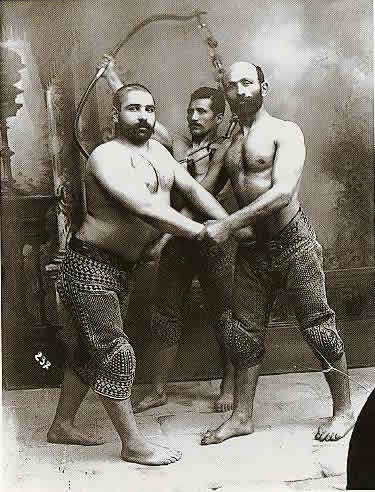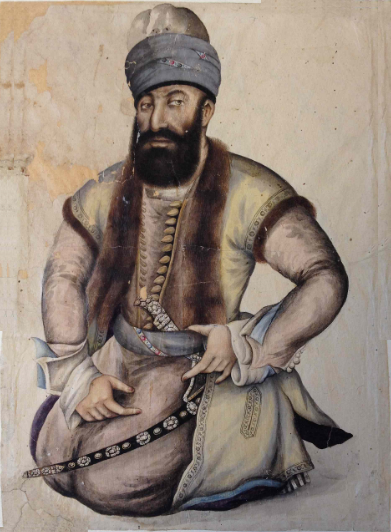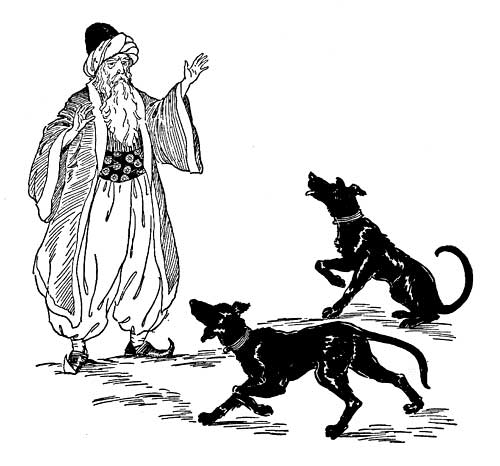|
Iranian Clothing
Traditional Persian clothing is the historical costume of the Persian people, and of History of Iran#Classical antiquity, ancient Persia (now Iran) before the 1930s Pahlavi dynasty. Historically, the fabric and color of clothing was very important. During the Achaemenid Empire, Achaemenian period (550–330 BC), Persian clothing started to reflect social status and eminence, the climate of the region, and the season. The design philosophy for ancient clothing was a marriage of both function and aesthetics. Images of Persian clothing examples can be seen in ancient art and Persian miniature paintings. Persian miniatures can employ both vivid and muted colors for clothing, although the colors of paint pigment often do not match the colors of dyes. Traditional Persian clothing is seldom worn in urban areas in modern times but has been well preserved in texts and paintings throughout history. History Clothing in Persia is divided into several historical periods, however little is k ... [...More Info...] [...Related Items...] OR: [Wikipedia] [Google] [Baidu] |
Fashion In Iran
Fashion in Iran has a cultural and economic impact on the county of Iran. During the Pahlavi dynasty, Pahlavi era around the mid-1930s, Western fashion was introduced to the country (then called Persia) and greatly influenced women's style. After the Iranian Revolution in 1978–1979, the hijab has become compulsory, which impacted the creation of clothing style. Beauty pageant festivals inside Iran were not held after the 1979 revolution, and the last selection ceremony of the ''beauty queen of Iran'' was held in 1978 in this country. After this, a high number of Iranian girls participated in the Beauty pageant and Miss Universe outside of Iran. Sahar Biniaz (Miss Universe Canada 2012) and Shermine Shahrivar, Shermineh Shahrivar (Miss Germany and Miss Europe) are examples of Iranian Model (person), models outside Iran. Social media networks have played a significant role in increasing the income from modeling in Iran. Additionally many Iranian Fashion design, fashion designers ha ... [...More Info...] [...Related Items...] OR: [Wikipedia] [Google] [Baidu] |
Nader Shah
Nader Shah Afshar (; 6 August 1698 or 22 October 1688 – 20 June 1747) was the founder of the Afsharid dynasty of Iran and one of the most powerful rulers in Iranian history, ruling as shah of Iran (Persia) from 1736 to 1747, when he was assassinated during a rebellion. He fought numerous campaigns throughout the Middle East, the Caucasus, Central Asia, and South Asia, emerging victorious from the battles of Herat, Mihmandust, Murche-Khort, Kirkuk, Yeghevārd, Khyber Pass, Karnal, and Kars. Because of his military genius,The Sword of Persia: Nader Shah, from Tribal Warrior to Conquering Tyrant "Nader commanded the most powerful military force in Asia, if not the world" (quote from publisher's summary) some historians have described him as the '' |
Persepolis Darafsh 2 (13)
Persepolis (; ; ) was the ceremonial capital of the Achaemenid Empire (). It is situated in the plains of Marvdasht, encircled by the southern Zagros mountains, Fars province of Iran. It is one of the key Iranian cultural heritage sites and a UNESCO World Heritage Site. The earliest remains of Persepolis date back to 515 BC. The city, acting as a major center for the empire, housed a palace complex and citadel designed to serve as the focal point for governance and ceremonial activities. It exemplifies the Achaemenid style of architecture. The complex was taken by the army of Alexander the Great in 330 BC, and soon after, its wooden parts were completely destroyed by fire, likely deliberately. The function of Persepolis remains unclear. It was not one of the largest cities in ancient Iran, let alone the rest of the empire, but appears to have been a grand ceremonial complex that was only occupied seasonally; the complex was raised high on a walled platform, with five "palaces ... [...More Info...] [...Related Items...] OR: [Wikipedia] [Google] [Baidu] |
Kaftan
A kaftan or caftan (; , ; , ; ) is a variant of the robe or tunic. Originating in Asia, it has been worn by a number of cultures around the world for thousands of years. In Russian usage, ''kaftan'' instead refers to a style of men's long suit with tight sleeves. It may be made of wool, cashmere wool, cashmere, silk, or cotton, and may be worn with a sash. Popular during the time of the Ottoman Empire, detailed and elaborately designed garments were given to ambassadors and other important guests at the Topkapı Palace. Variations of the kaftan were inherited by cultures throughout Asia and were worn by individuals in Russia (North Asia, Eastern Europe and formerly Central Asia), Southwest Asia and Northern Africa. Styles, uses, and names for the kaftan vary from culture to culture. The kaftan is often worn as a Coat (clothing), coat or as an overdress, usually having long sleeves and reaching to the ankles. In regions with a warm climate, it is worn as a light-weight, loose-f ... [...More Info...] [...Related Items...] OR: [Wikipedia] [Google] [Baidu] |
Zand Period
The Zand dynasty () was an Iranian dynasty, founded by Karim Khan Zand (1751–1779) that initially ruled southern and central Iran in the 18th century. It later expanded to include much of the rest of contemporary Iran (except for the provinces of Baluchestan and Khorasan) as well as parts of Iraq. The lands of present-day Armenia, Azerbaijan, and Georgia were controlled by khanates which were de jure part of the Zand realm, but the region was de facto autonomous. The island of Bahrain was also held for the Zands by the autonomous Al-Mazkur sheikhdom of Bushehr. The reign of its most important ruler, Karim Khan, was marked by prosperity and peace. With its capital at Shiraz, arts and architecture flourished under Karim Khan's reign, with some themes in architecture being revived from nearby sites of pre-Islamic Achaemenid (550–330 BC) and Sasanian (224–651 AD) eras. The tombs of the medieval Persian poets Hafez and Saadi Shirazi were also renovated by Karim Khan. Dist ... [...More Info...] [...Related Items...] OR: [Wikipedia] [Google] [Baidu] |
Abaya
The abaya (colloquially and more commonly, ', especially in Literary Arabic: '; plural ', '), sometimes also called an aba, is a simple, loose over-garment, essentially a robe-like dress, worn by some women in the Muslim world including most of the Middle East, North Africa, and parts of the Horn of Africa. Traditional abayas are usually black and may either be a large square of fabric draped from the shoulders or head or a long kaftan. The ''abaya'' covers the whole body except the head (sometimes), feet, and hands. It can be worn with the '' niqāb'', a face veil covering all but the eyes. Some women also wear long black gloves, so their hands are also covered. Commonly, the abaya is worn on special occasions, such as mosque visits, Islamic holiday celebrations for Eid al-Fitr and Eid al-Adha, and also during the Islamic holy month of Ramadan. Rationale The rationale for the abaya is often attributed to the Quranic quote, "O Prophet, tell your wives and daughters, and t ... [...More Info...] [...Related Items...] OR: [Wikipedia] [Google] [Baidu] |
Harem Pants
Harem pants or harem trousers are baggy, long trousers, pants caught in at the ankle. Early on, the style was also called a harem skirt. Inspired by Middle East clothing styles, especially şalvar (Turkish trousers), so-called 'harem pants/skirts' were introduced to Western fashion by designers such as Paul Poiret around 1910. The term 'harem pants' subsequently became popular in the West as a generic term for baggy trousers caught in at the ankle that suggest the Turkish style, or similar styles such as Bloomers (clothing), bloomers, the South Asian shalwar kameez, shalwar and patiala salwar; the Bosnian dimije; sirwal (as worn by Zouaves); and the Ukrainian sharovary. Early 20th century In 1911, the Paris couturier Paul Poiret introduced harem pants as part of his efforts to reinvent and 'liberate' Western female fashion. His "Style Sultane" included the ''jupe-culotte'' or harem pant, made with full legs tied in at the ankle. Alternative names for the harem skirt/pants include ... [...More Info...] [...Related Items...] OR: [Wikipedia] [Google] [Baidu] |
Shalvar
Sirwal, also sherwal, saroual, seroual, sarouel or serouelSmith, Robin (199''American Civil War Zouaves'', p. 52. Osprey PublishingAt Google Books. Retrieved 23 August 2013. ( (''sirwāl''), also known, in some contexts, as (a subtype of) Harem pants, are a form of trousers. The word is of Persian language#Old Persian, Persian origin; ''shalwār'' (شلوار) was borrowed into Ancient Greek, Greek as σαράβαρα ''sarábāra'', "loose trousers worn by Scythians". The words used in Balkan sprachbund#Vocabulary, Balkan languages came through the Ottoman Turks and did not continue the Ancient Greek designation. They are typically worn in Muslim countries, but also extensively in the Polish–Lithuanian Commonwealth, Polish Commonwealth, in Mallorca, in the Greece, Greek countryside, and other places in the Balkans that were influenced by Ottoman Turks prior to World War I. The trousers are not originally an Arab garment but were introduced from Persia to other Middle East, Mid ... [...More Info...] [...Related Items...] OR: [Wikipedia] [Google] [Baidu] |
Qajar Dynasty
The Qajar family (; 1789–1925) was an Iranian royal family founded by Mohammad Khan (), a member of the Qoyunlu clan of the Turkoman-descended Qajar tribe. The dynasty's effective rule in Iran ended in 1925 when Iran's '' Majlis'', convening as a constituent assembly on 12 December 1925, declared Reza Shah, a former brigadier-general of the Persian Cossack Brigade, as the new ''shah'' of what became known as Pahlavi Iran. List of Qajar monarchs Qajar imperial family The Qajar Imperial Family in exile is currently headed by the eldest descendant of Mohammad Ali Shah, Sultan Mohammad Ali Mirza Qajar, while the Heir Presumptive to the Qajar throne is Mohammad Hassan Mirza II, the grandson of Mohammad Hassan Mirza, Sultan Ahmad Shah's brother and heir. Mohammad Hassan Mirza died in England in 1943, having proclaimed himself shah in exile in 1930 after the death of his brother in France. Today, the descendants of the Qajars often identify themselves as such and hol ... [...More Info...] [...Related Items...] OR: [Wikipedia] [Google] [Baidu] |
Stirrup Pants
Stirrup pants or stirrup leggings are a type of close-fitting pants that taper at the ankle, similar to leggings, except that the material extends to a band, or strap, that is worn under the arch of the foot to hold the pant leg in place. The band of material is often elasticized to prevent the material around the foot from tearing. Stirrup pants were originally sportswear for women, and remain sportswear for horse riding and skiing. However, they have come in and out of fashion during the 20th and early 21st centuries, peaking in popularity as street fashion during the 1980s to the mid-1990s. History Stirrup pants were first worn as jodhpurs for horse riders. The purpose of the strap under the foot was to hold the pant legs in place in the boots of the rider. As ladies moved away from riding sidesaddle, they began wearing riding breeches in the 1920s in a similar style to those worn by men. By 1934, jodhpurs as riding pants with foot straps were being advertised in the United Stat ... [...More Info...] [...Related Items...] OR: [Wikipedia] [Google] [Baidu] |
Encyclopædia Iranica
''Encyclopædia Iranica'' is a project whose goal is to create a comprehensive and authoritative English-language encyclopedia about the history, culture, and civilization of Iranian peoples from prehistory to modern times. Scope The ''Encyclopædia Iranica'' is dedicated to the study of Iranian civilization in the wider Middle East, the Caucasus, Southeastern Europe, Central Asia, and the Indian subcontinent. The academic reference work will eventually cover all aspects of Iranian history and culture as well as all Iranian languages and literatures, facilitating the whole range of Iranian studies research from archeology to political sciences. It is a project founded by Ehsan Yarshater in 1973 and currently carried out at Columbia University's Center for Iranian Studies. It is considered the standard encyclopedia of the academic discipline of Iranistics. The scope of the encyclopedia goes beyond modern Iran (also known as ''"Persia"'') and encompasses the entire Iranian ... [...More Info...] [...Related Items...] OR: [Wikipedia] [Google] [Baidu] |
Antoin Sevruguin Zoorkhaneh
Antoin is an Irish masculine given name that is a derivative of Antonius that is commonly used in Ireland. It may refer to: * Antoin Essomba (born 2003), Cameroonian footballer * Antoin McFadden (born c.1989/90), Irish Gaelic football coach and player * Antoin Miliordos (1924–2012), Greek alpine skier * Antoin "Tony" Rezko (born 1955), American businessman * Antoin Sevruguin (1851–1933), Iranian photographer See also *Antoan *Antoine, a given name *Antolin (name) * Anton (other) *Antonin (name) Antonin, Antonín, and Antoñín are masculine given names. Antonín, a Czech language, Czech name in use in the Czech Republic, and Antonin, a French language, French name in use in France, and French-speaking countries, are both considered altern ... * Antoon * Antoun Notes {{given name Irish masculine given names Masculine given names ... [...More Info...] [...Related Items...] OR: [Wikipedia] [Google] [Baidu] |







